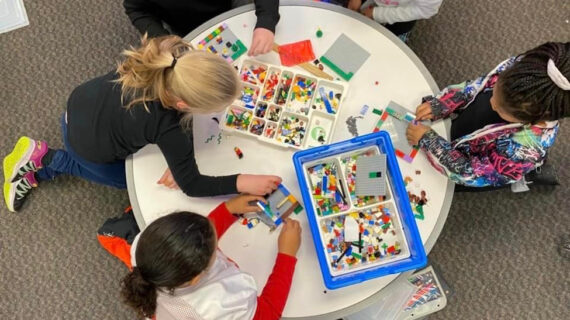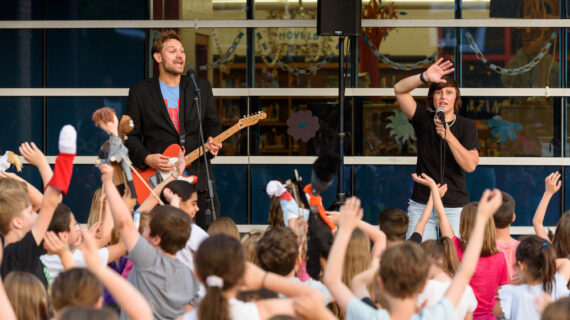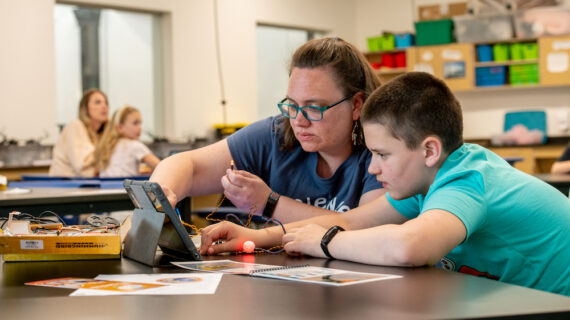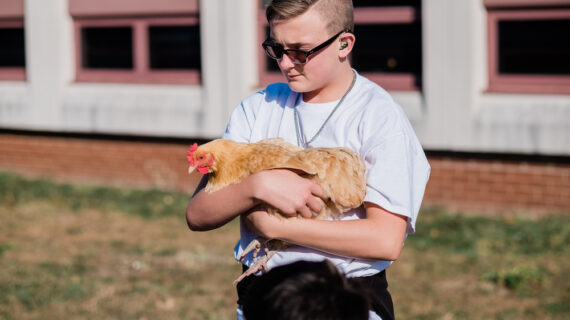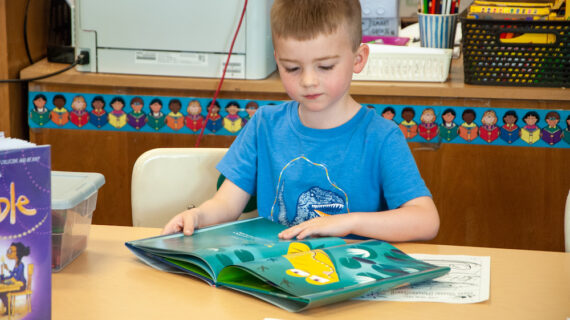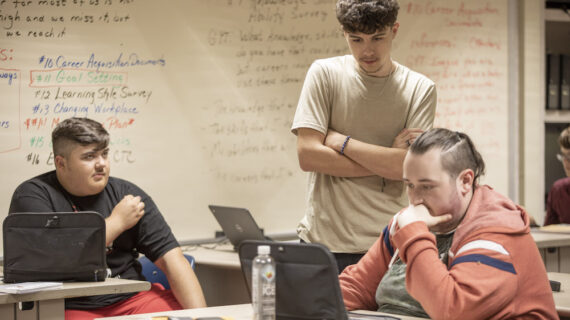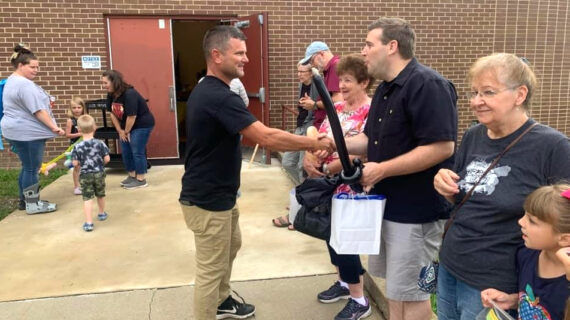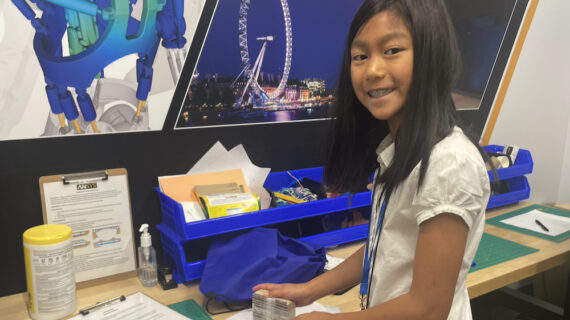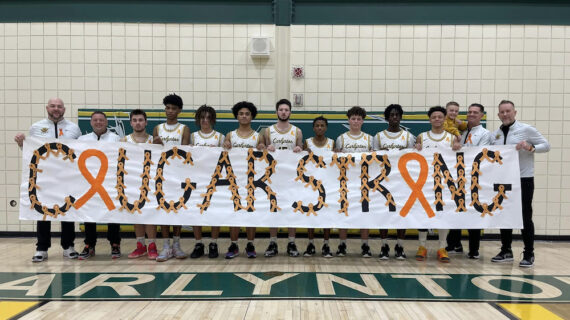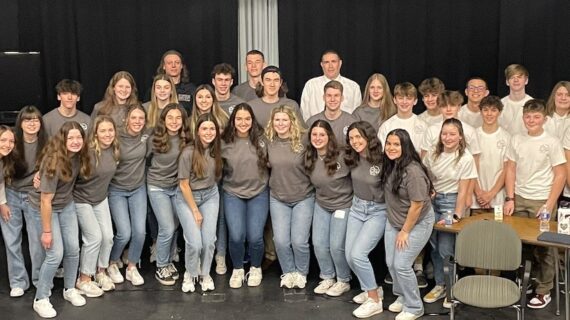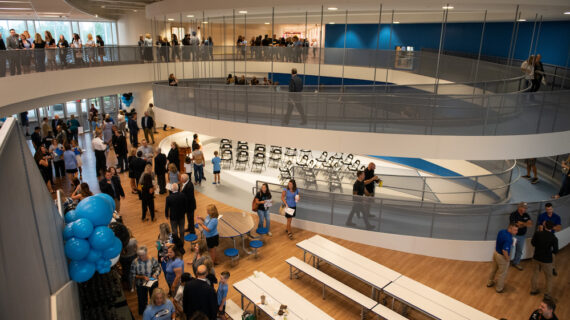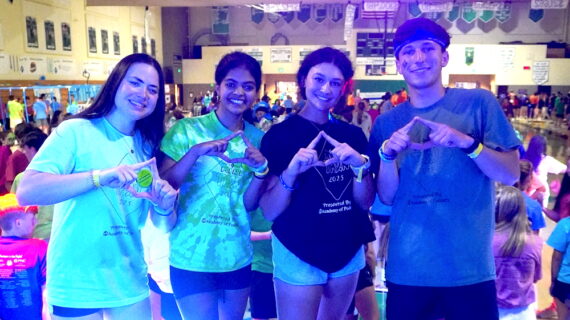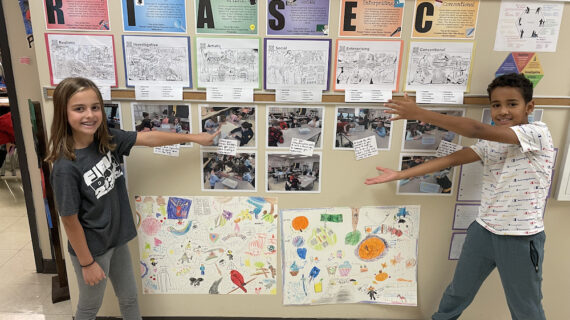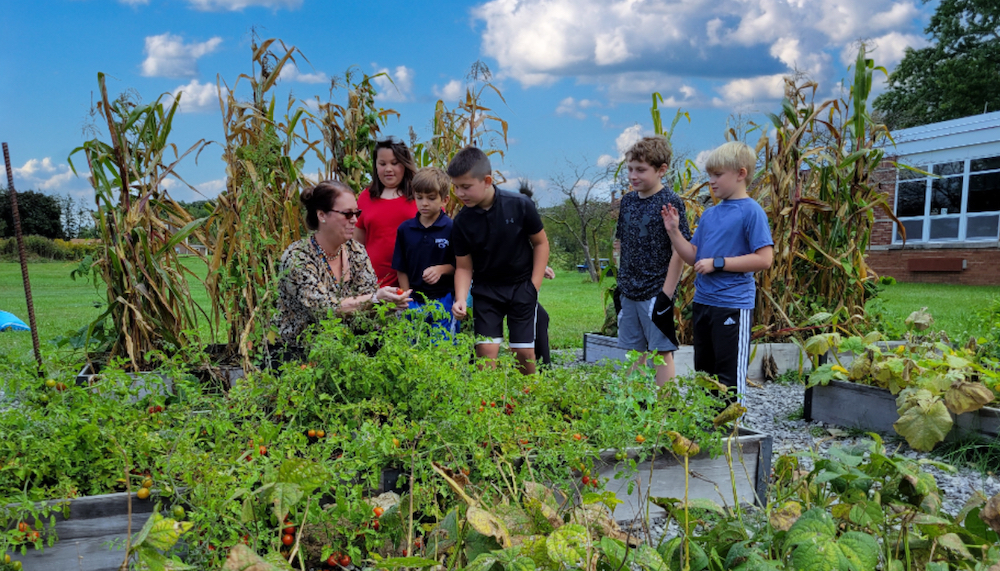
Voices bubbling up: From farmland to city streets, Butler Area works to hear from everyone
This story is one in a series created in collaboration with the AASA Learning 2025 Alliance to celebrate the work of groundbreaking school districts in the Pittsburgh region. Kidsburgh will share these stories throughout 2023.
When the team at Butler Area School District began working on their strategic plan, one thing was clear: They wanted the entire community to weigh in.
Superintendent Brian White and his team were eager to hear from the parents who are raising their students and talk with local employers who will one day hire these kids. They wanted to meaningfully welcome teachers’ voices, too, and hear from students.
But Butler Area is an enormous district. It covers nearly 150 square miles, encompassing everything from farmland to city streets. The district has seven elementary schools and serves kids from parts of eight boroughs and townships. In a district this size, how do you welcome all voices without having the planning process descend into chaos?
The solution was human-centered design, a creative approach to problem-solving that organizes multiple kinds of input into actionable, practical plans. Participants are all given a chance to make observations, empathize with each other and collaborate on solutions.
“I love human-centered design because it allows things to bubble up,” says Julie Hopp, the district’s director of curriculum, instruction, and professional development. “If the activities are chosen properly, then everything – all of the issues, all of the things that are important – bubble up to the surface through the course of the activity.”
Hopp now uses this method with staff members and community groups, because she’s found it allows people to get to the heart of an issue without emotions spilling over.
FINDING THE PERFECT FOCUS
The curriculum at Butler’s seven elementary schools is coordinated. Every school learns the same material. But through the process of human-centered design, each school now has its own distinct focus area.
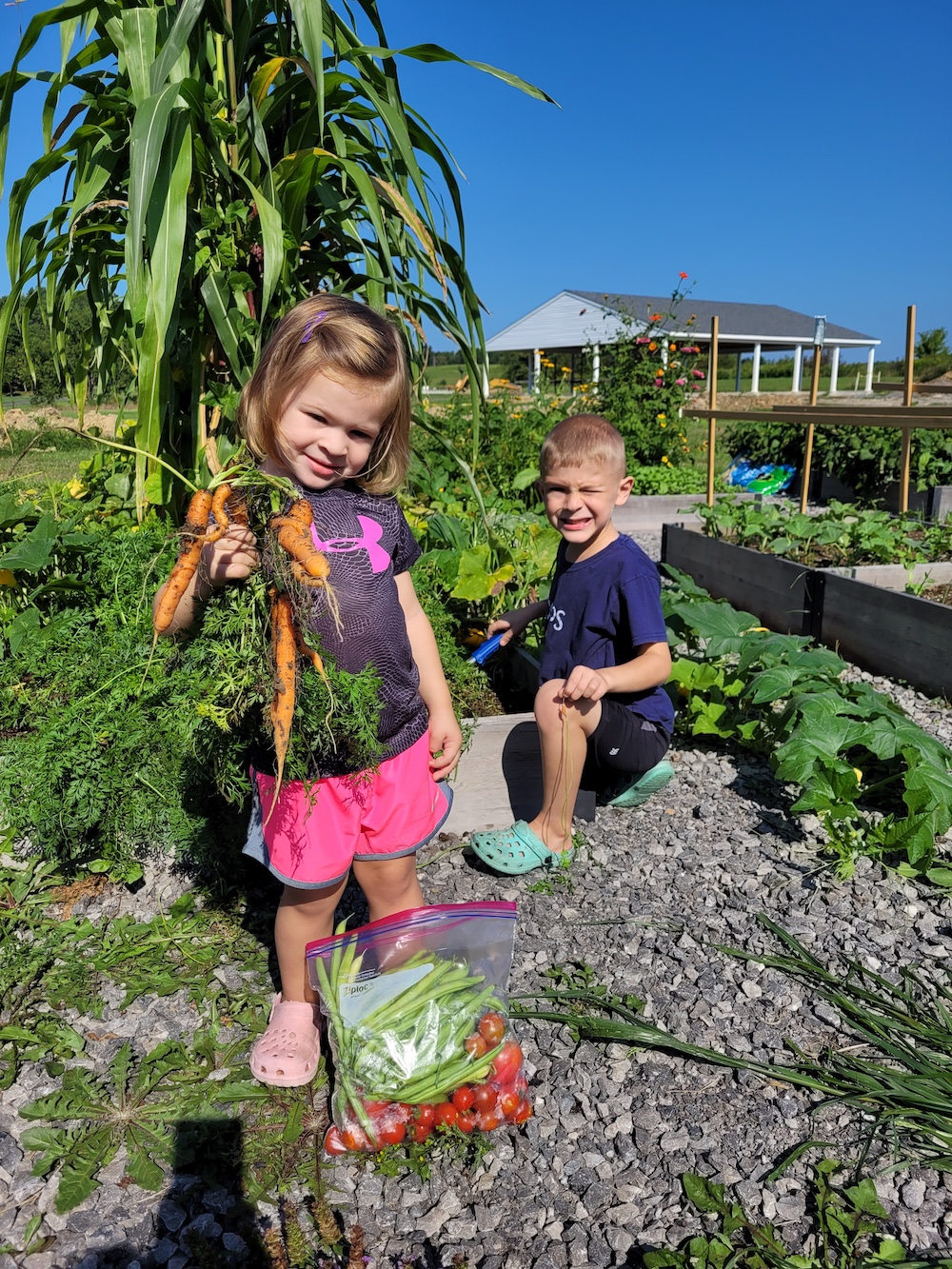
Broad Street Elementary, located in the heart of the city of Butler, is focused on community.
Connoquenessing Elementary is all about outdoor learning. At Summit Elementary, kids explore subjects like math, science, and history through the lens of agriculture. Some of the students live on farms or have parents who work in the agriculture industry. So they’re able to discover more about that career path, while understanding their heritage and seeing their daily lives reflected in their schoolwork.
As teachers at these and the other four elementary schools work their way through their common curriculum, Hopp says, “they are doing what we are calling curriculum overlays. They can say, ‘At this point in scope and sequence, this is another option of how this instruction could happen.’”
The district used human-centered design to arrive at these focus areas. They’ve also used it to make design choices at each of the buildings. It led to some surprises: While planning outdoor learning space at Summit Elementary, the administration had been assuming that kids would want a stream where they could play and learn.
“We always think of kids wanting to go play in the water, and kids being around water and swimming,” says David Andrews, instructional coach at Butler Area School District. But as the district gathered feedback from students, they discovered that the kids would actually prefer a walking trail because they didn’t really want to be in water during the school day.
Human-centered design is also helping Butler’s elementary schools connect with one another. Through a project called “Growing a Green Future,” funded by a Moonshot Grant from Remake Learning, students at Summit are growing fruits and vegetables that are sold at a farmer’s market set up at Broad Street.
Students at both schools are collaborating on this project, which gives Summit kids real-world agriculture experience and helps Broad Street kids tackle their community’s lack of access to fresh produce. What’s more, it shows them how to work with each other and reach beyond the doors of their classrooms and school buildings.
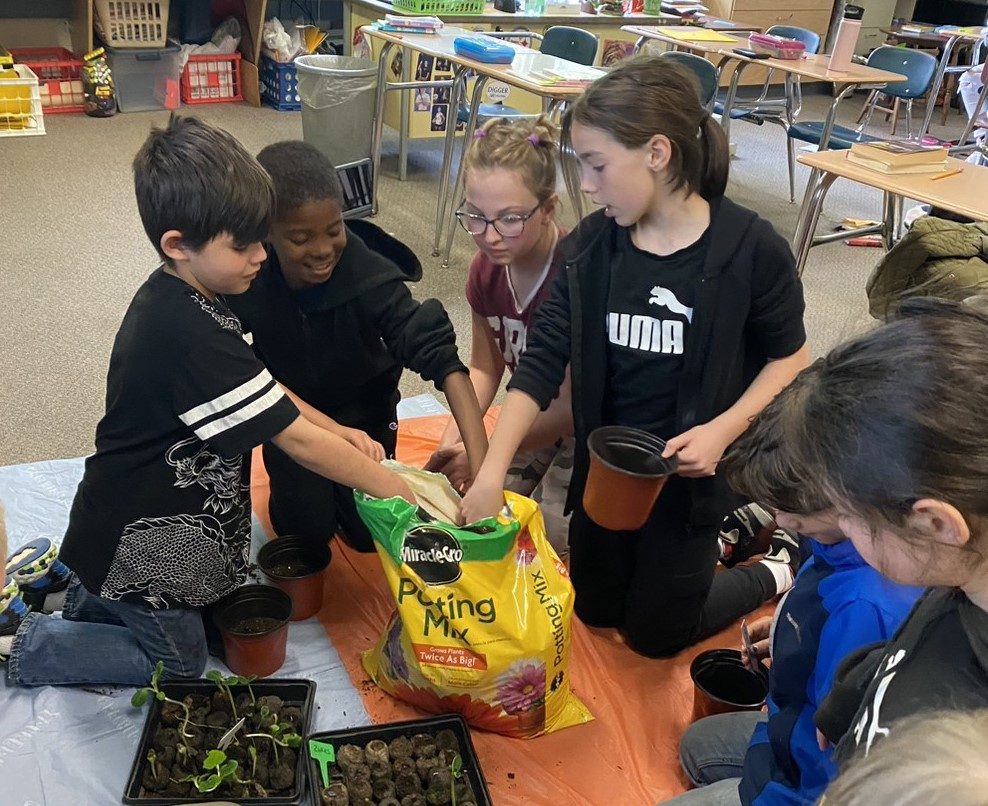
ELEVATING EDUCATION
Butler Area is one of the districts participating in the Western Pennsylvania Learning 2025 Alliance, a regional cohort of school districts working together — and with peers across the country — to create student-centered, equity-focused, future-driven schools that prepare every learner for tomorrow.
Led by local superintendents and AASA, The School Superintendents Association, the Alliance offers White and his team a chance to discuss challenges and solutions with peers throughout the Pittsburgh region and nationally.
Like many districts in the Alliance, Butler Area has used human-centered design and community engagement to rethink learning at the high school level and map out the skills and mindsets that make up their “Portrait of a Graduate.”
White and his colleagues led more than 20 teams made up of parents, teachers, administrators, and a wide array of community members through a range of human-centered design activities.
“Each of those teams did an activity,” Hopp says. “Then they came together, and things were able to rise to the top. The end result is that Portrait of a Graduate, which really is our guiding document.”
The district’s next project? Mapping out how teaching at all grade levels can ensure that all kids throughout Butler’s sprawling, diverse district are ready for the world on graduation day.
“We’re now starting to say, ‘What does that look like in first grade? What does that look like in second grade? How are we working to get our kids ready?’” Hopp says. “We don’t want to wait until they’re in high school to think about that. We want to get them ready and be moving toward that all along.”
Want to download this story? Click here for a PDF.
